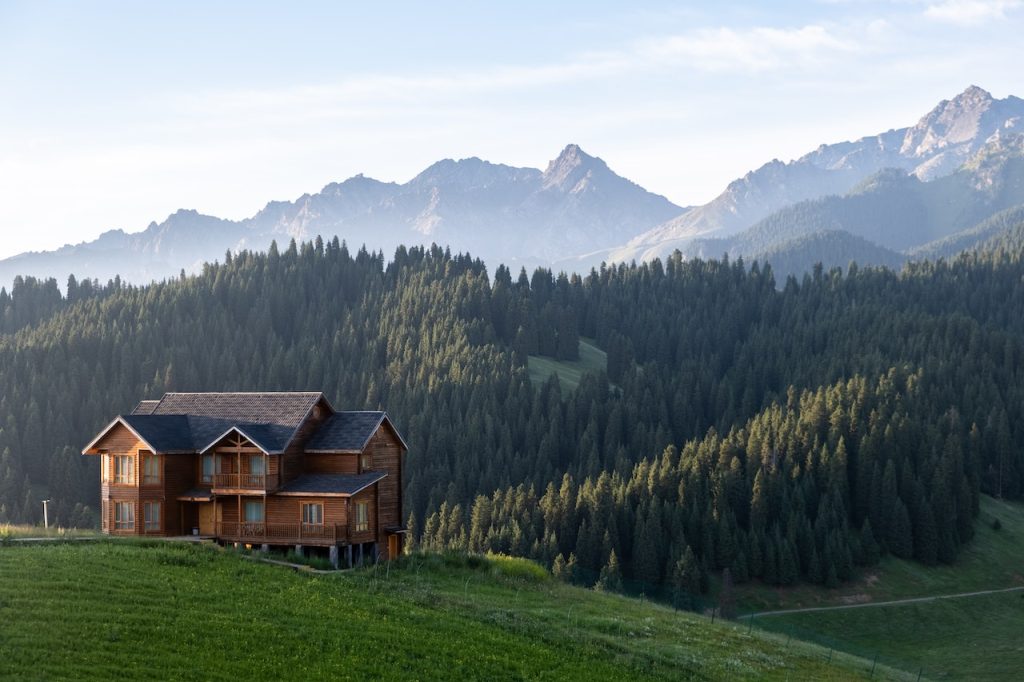# Tech Meets Tradition: How Technology is Enhancing Sustainable Farming Practices
Imagine stepping outside on a crisp morning, the dew still glistening on the grass, and knowing your efforts in sustainable farming are supported by some pretty remarkable technology. There’s a certain joy in knowing that while tradition roots you in the age-old practices of planting by the moon or composting kitchen scraps, innovations are here to enhance every aspect of the farming journey. It’s like cooking a family recipe and adding a dash of modern culinary magic, transforming the whole experience while honoring the past. Today, let’s dive into the ways technology is enriching sustainable farming practices and how we can all harness these tools to cultivate a greener future.
## The Harmony of Heritage and High-Tech
For centuries, farmers relied on natural rhythms and tools—think hand plows, crop rotation, and rain gauges—to nurture their land. These techniques, passed down through generations, are invaluable for preserving the environment and supporting biodiversity. But as the world evolves, integrating technology into these time-honored methods has created a powerful synergy.
Drones flying overhead, soil sensors buried deep, and climate forecasting apps are just a few of the innovations revolutionizing sustainable farming. They help not only to maximize production but to reduce the carbon footprint of farming activities. This blend of tech and tradition holds the key to solving many challenges in today’s agriculture, from soil health to water conservation.
## Precision Agriculture: Farming Reimagined
One of the most exciting advancements in sustainable farming is precision agriculture. This methodology uses advanced technologies like GPS, IoT devices, and data analytics to monitor and manage field variability. The aim? To optimize both the quality and quantity of produce while minimizing resource waste.
### Benefits of Precision Agriculture
1. **Resource Efficiency**: By using sensors to gather data, farmers can apply water, fertilizers, and pesticides only where needed. This reduces runoff, conserves water, and lowers input costs.
2. **Customized Planting**: Crop management tools allow farmers to analyze which plants thrive in specific conditions. This ensures better yields by planting the right crops in the right areas.
3. **Data-Driven Decisions**: By collecting and analyzing farming data, decisions can be based on facts rather than intuition. This results in more sustainable choices that benefit the farm and environment.
## Smart Irrigation Systems: Water Wisdom
Water scarcity is one of the most pressing issues for farmers, especially in regions where drought is common. Smart irrigation systems are game-changers for ensuring crops receive the right amount of water without wasting a drop.
### The Mechanics of Smart Irrigation
These systems utilize soil moisture sensors and weather forecasts to control when and how much to water plants. Some even integrate with smartphone apps, allowing farmers to adjust settings remotely. This means you can optimize your water usage no matter where you are, reducing waste and keeping your crops healthy.
### Benefits of Smart Irrigation
– **Conservation**: By watering only when necessary, farmers can significantly lower their water usage, contributing to a more sustainable future.
– **Pathogen Prevention**: Over-watering can lead to diseases in plants; a smart irrigation system helps maintain a balance that keeps crops healthy.
– **Cost Savings**: With less water waste, agricultural bills drop, providing more funds for other sustainable practices.
## Soil Monitoring: Ground Control
The foundation of successful farming lies in healthy soil. Innovations in soil monitoring technology ensure that farmers have real-time data about the health of their land. This means no more guesswork; decisions can be made based on hard evidence.
### What Soil Monitoring Provides
– **Nutrient Levels**: Knowing the soil’s nutrient content helps farmers apply fertilizers precisely and avoid over-application.
– **pH Levels**: Soil acidity affects plant growth. Monitoring pH allows farmers to amend soil adequately, ensuring optimal growth conditions.
– **Microbial Activity**: Healthy soil teems with life. By measuring microbial activity, farmers can better understand the ecosystem beneath the surface and make informed decisions that benefit both crops and the environment.
## Leverage Agroforestry: Nature’s Duo
Integrating trees and shrubs with crops or livestock isn’t just about tradition; it’s a prime example of how technology can boost the benefits of agroforestry systems. Remote sensing technologies can analyze how various species interact, optimizing layouts for biodiversity and crop health.
### The Impact of Agroforestry on Sustainability
1. **Biodiversity**: Mixing different plants and trees enhances biodiversity, creating habitats for wildlife and ensuring resilience against pests.
2. **Carbon Sequestration**: Trees capture carbon, making agroforestry a powerful ally in the fight against climate change.
3. **Soil Stability**: The root structures of trees help prevent erosion and maintain soil depth, enhancing water retention.
## Greenhouse Technologies: Growing Smarter
The rise of controlled-environment agriculture (CEA) has transformed how we approach growing food, even in urban areas. High-tech greenhouses utilize LED lighting, hydroponics, and climate control systems to create optimal growth conditions year-round.
### Advantages of High-Tech Greenhouses
– **Resource Conservation**: CEA systems can use up to 90% less water compared to traditional farming, significantly reducing waste.
– **Local Food Production**: Urban greenhouses can produce fresh food close to consumers, cutting down on transportation emissions.
– **Extended Growing Seasons**: With climate control, crops can be cultivated regardless of outdoor conditions, allowing for year-round harvests.
## The Role of Blockchain in Sustainable Farming
While it may sound futuristic, blockchain technology can significantly enhance transparency and traceability in food production. Farmers can log every step of their production journey, ensuring that consumers know precisely where their food comes from.
### Benefits of Blockchain in Agriculture
– **Trust and Transparency**: Consumers increasingly demand to know the origins of their food. Blockchain provides an unalterable record of every transaction, from field to fork.
– **Fair Compensation**: By tracking transactions, farmers can ensure they receive fair wages for their products.
– **Waste Reduction**: Transparency allows for better inventory management, minimizing food waste throughout the supply chain.
## Pro Tips for Embracing Technology in Sustainable Farming
1. **Educate Yourself**: Take online courses or attend workshops to understand the latest technologies that can benefit your farm.
2. **Start Small**: Implement one technology at a time. For example, begin with soil sensors before expanding to precision irrigation systems.
3. **Community Collaboration**: Join local farming groups or co-ops to share insights and experiences with fellow farmers embracing technology.
4. **Invest in Training**: Ensure that everyone involved in your farming operation understands how to use new technologies effectively to maximize their benefits.
5. **Evaluate Regularly**: Periodically assess your technology’s impact on yields, resources, and soil health to ensure you’re on the right path.
## The Future is Bright
The fusion of technology and traditional farming practices is not just a trend—it’s the future of agriculture. By embracing these innovations, we can create more resilient farming systems that respect the earth while producing healthy, nutritious food. It’s exciting to think about what’s to come: drone-assisted planting, AI-driven pest management, and even more innovative solutions we can’t yet imagine.
In this new era of agriculture, everyone—from big-scale farmers to backyard gardeners—can be part of the movement toward sustainable practices. So, grab your smartphone, dust off that old shovel, and get ready for an adventure where technology meets tradition. Let’s cultivate a future that respects the land, our food, and each other, ensuring generations to come can thrive. The journey toward sustainability is just beginning, and the possibilities are as vast as the fields we cultivate!



